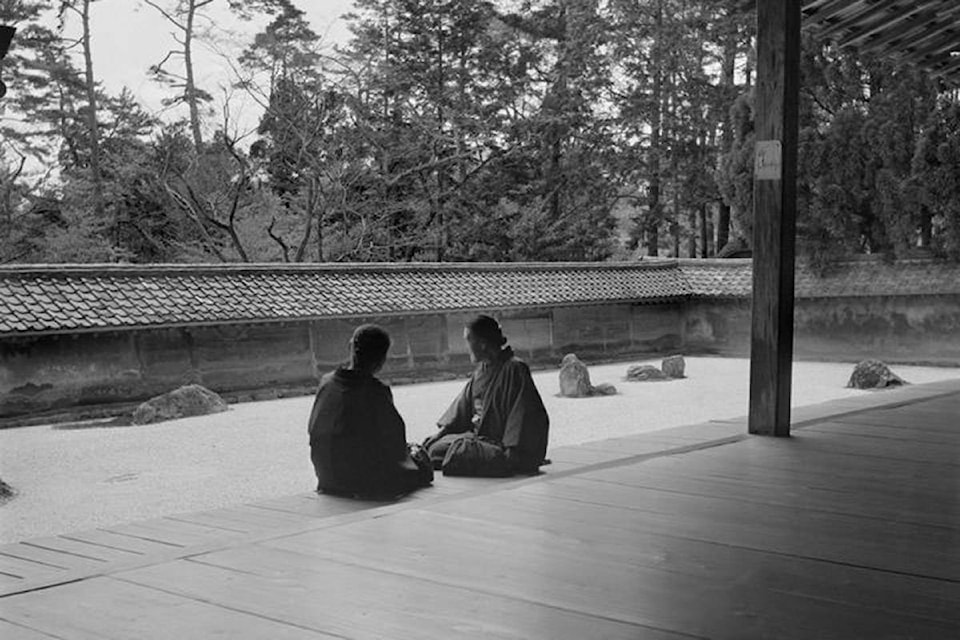Faith in stories that have been passed down through time contains both danger and opportunity. The danger of faith is that we’ll take it literally and keep taking it literally with such vehemence that we go to war to defend it. The opportunity is that you take the story literally, but then you let it meet another story so both stories can start turning towards a deeper truth. But to take your story literally, to clench your fist around it, and to say it’s true and nothing else is true, eliminates the possibility of conversation. This leads to war.
In Zen, we have a story-telling faith, a faith that uses stories to keep the conversation going so that mutual turning to a deeper truth is possible. We have a lot of stories in Zen about crises, about turning points. But we know that these stories about people turning from bondage to freedom, from ignorance to enlightenment are just stories. They are not what happened. Even the stories that are based on historical fact are not what happened; they are just stories about what happened.
If a teacher tells a Zen story and a student knows that it isn’t historically correct and says that it didn’t happen, the teacher will say, “You are right.” This begins a conversation that could lead to a truth deeper than the story – the truth that everything is fundamentally peaceful and still, and that fighting over our stories stirs that supreme stillness into conflict.
So Zen stories are fictions that the ancient teachers created to help us question everything, and give us the courage to face the danger of opening to the possibility that there is a truth deeper than the one we have been raised on. It’s natural to want to have a story that is true, but if we hold on to a story as true, it’s hard to face the danger that the story is actually false. So fearful people are walking around believing that they know the one true story, and this rigidity totally enslaves them. Their slavery makes them miserable, and because misery loves company, they want everybody else to cling to their story with them. They work hard to make it so.
People who believe they have the one true story think they have answers for everything. Ignorance arises. Wisdom can arise in them as well, but only if they allow questions. “Do you think it is possible that our story, or even some elements of our story are not true?” This question invites a conversation about faith. All too often, it results in persecution, shunning and expulsion.
As a Zen priest, I am willing to converse about the stories of the Buddha way. I know that Zen stories don’t give me the truth. In Zen, truth is revealed when we meet face-to-face in conversation where the turning can start happening. In every face-to-face meeting, there is danger. Danger that I will get hurt. Danger that I will be afraid and hold on to my truth. Danger that I will hurt someone with my clinging and disrespect for everybody that disagrees with my unassailable truth.
There is danger, but there is also an opportunity. An opportunity to say – I’ve got a truth, you’ve got a truth – everybody’s got a truth. And I now endanger my truth to you. Please be kind to my truth but still, if you want to ask questions about it go ahead. In this conversation, there is freedom that allows the conversation to transmit a liberating truth that is greater than your story or my story. Zen is not a transmission from the universe through a teacher or priest who has special access to ultimate truth. Truth reveals itself between two people who are awake to what is being transmitted between them. In Zen we have the expression, “special transmission outside the scriptures.” Most religious traditions have scriptures, in Zen, the truth lies outside the scriptures, and that truth is realized through open conversation.
